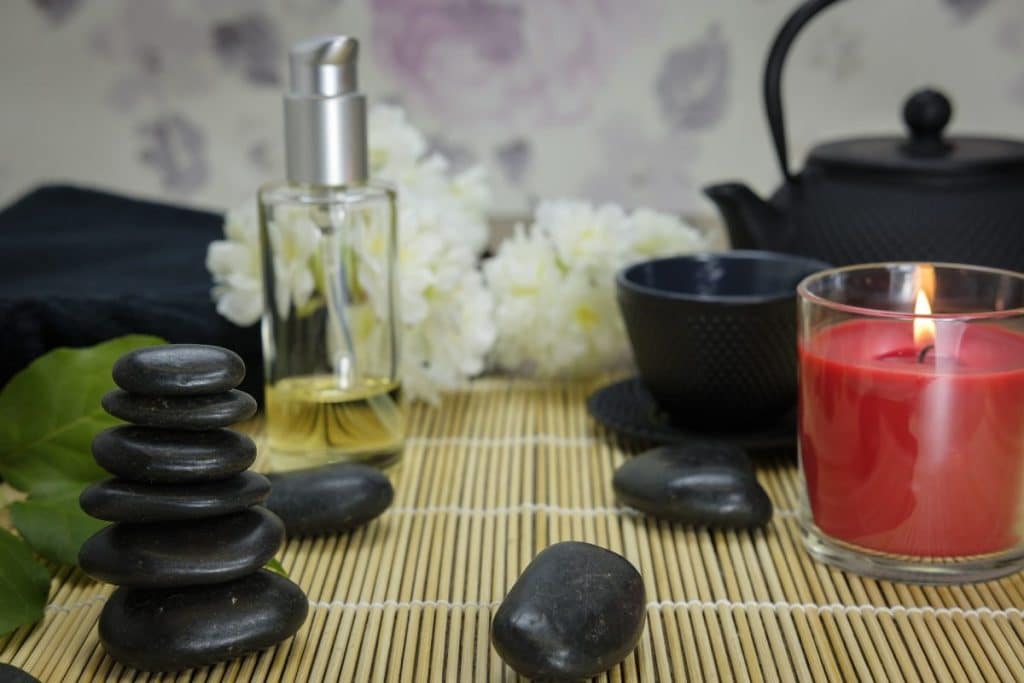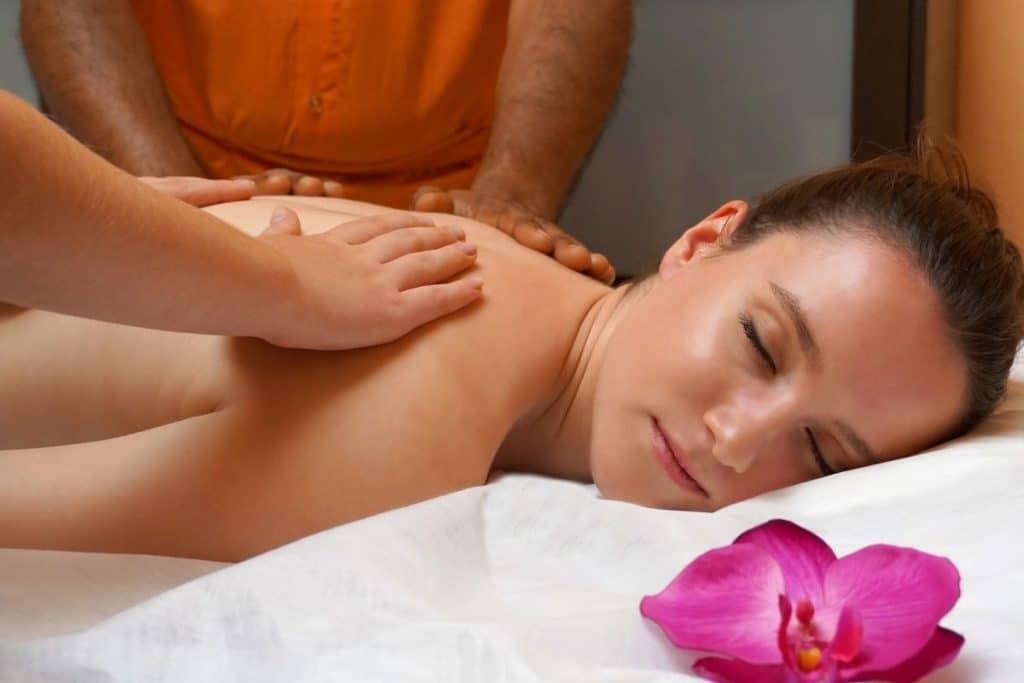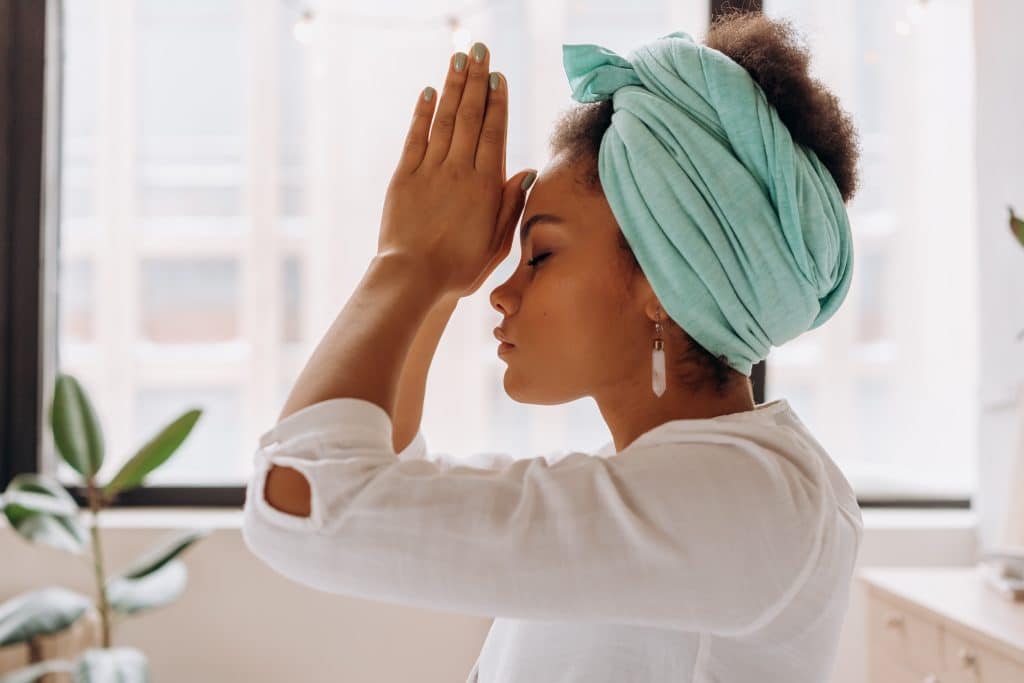What Is Ayurveda?
Unlike yoga, meditation, and much of the Eastern philosophy and religion that has spread throughout the West for the last several decades, ayurveda is still relatively new and unknown in the western world.
You might have heard about it in a yoga class in passing, or as you picked up your latest chai latte, and now you’re wondering, what is ayurveda?

Table of Contents
What Is Ayurveda?
Ayurveda, like yoga, has been around likely since the very beginning of civilization in India. It is an ancient practice in wellness and healing, with an emphasis on prevention rather than treatment, though it deals with treatment as well.
The focus of ayurveda is on energy centers in your body and on keeping them in balance. The theory is that, energetically, when you are experiencing dis-ease, it is because one or more of your energy centers have come out of balance
There exist two main schools of ayurveda, and they have much in common.
One is the traditional ayurveda handed down through the millennia, and the other is the Maharishi method, which is a more modern approach to ayurveda as taught by Maharishi Mahesh Yogi, the founder of transcendental meditation, or TM.
Both types of ayurvedic practice will include the prescription of herbs for improving on imbalance and the belief that all disease stems from an imbalance in the doshas.
The primary difference between the two is the incorporation of TM and the heightened focus on consciousness as the pathway to wellness.
When you meet with an ayurvedic practitioner, he or she will take a detailed medical history, check your pulse, feel your abdomen, examine your tongue, eyes, nails, and skin, and listen to the tone of your voice. You will also be asked about your lifestyle, including your daily routine, your diet, and your exercise and meditation practices.

The Doshas
The practitioner is primarily seeking to understand and examine your doshas – the three energy centers all humans have.
Vata
Your Vata dosha is the energy that controls your body functions associated with motion, including blood circulation, breathing, blinking, and heartbeat. When your Vata is out of balance, you experience fear and anxiety. When it is in balance, you feel creative and energetic.
Pitta
The Pitta dosha controls your bod’s metabolic systems, which include digestion, absorption, nutrition, and temperature. When your Pitta is out of balance, you can have ulcers and feel angry. When it is in balance, you feel content and connected to your intelligence.
Kapha
The Kapha dosha is the energy that controls growth in your body. It ensures water gets to all your systems, moisturizing your skin and maintaining your immune system. When Kapha is out of balance, you feel insecure and envious. When it is in balance, you feel loving and forgiving.
Each person has all three doshas, but we are typically dominated by one, maybe two of them. Your dosha energy can be disrupted by a number of things, including family issues, diet, exercise, stress, and even the weather.
Of course, you can begin ayurvedic treatments and live an ayurvedic aligned life to prevent this disruption from ever taking place.
When your doshas are disrupted for too long, you begin to feel ill and you experience disease. Ayurvedic treatments are then called upon to bring your doshas back into balance and heal you.
Because the emphasis in Maharishi ayurveda is a scientific one, with evidence to support the practice, we have known for more than 7 decades that these practices are highly effective at healing disease, and much of it begins with meditation.
Of course, in the Maharishi style, the meditation would be transcendental meditation, where the focus in on repeating the same word for 20 minutes two times a day in order to reach a higher state of consciousness, the truth is that any meditation that allows you to access that deeper state will work.

Common Treatments
In addition to meditation guidance, you can expect to undergo any of 20 treatments. Some of them include:
Pranayama
Anyone who’s taken a few yoga classes knows pranayama refers to breathing exercises. Pranayama breathing relaxes you and makes you feel calm, directly addressing your Vata dosha, reducing fear and anxiety.
Abhyanga
Another helpful treatment for the Vata dosha is abhyanga, which is the rubbing of herbal oil into your skin to improve blood circulation and draw toxins out of your body through your skin.
Rasayana
Rasayana is a form of transcendental meditation, calling upon the repetition of a single word or phrase during meditation in combination with herbal treatments. Rasayana can address all three doshas, depending on the imbalance.
Yoga
Yoga is a tried-and-true ayurveda treatment, drawing on pranayama, movement, and meditation. Yoga has been shown in numerous studies to reduce blood pressure and cholesterol levels as well as anxiety and toxins.
Pancha Karma
Pancha karma is a cleansing practice that calls on methods that make you sweat, have a bowel movement, and even vomit in order to rid your body of toxins and purify you.
Herbal Medicines
An entire range of ancient ayurvedic herbs exist to bring the doshas into balance, including cinnamon, turmeric, ginger, and ashwagandha.

Do You Need Ayurveda?
Do you need ayurveda. Ayurvedic practitioners would, I believe, argue that everyone could improve their lives through ayurveda.
So, if your life is charmed and you have no room for improvement, then keep doing what you’re doing. You’re winning.
If, however, you, like almost everyone else on earth, and particularly in the western world, find yourself stressed to the max, overwhelmed, anxious, or depressed, ayurveda can certainly help.
The nice thing about ayurveda is that, at the very least, it cannot hurt.
Meditation is good for everyone, eating a healthy diet is a good idea for everyone, and getting plenty of exercise and fresh air are recommended for all of us.
What could possibly go wrong?
Sure, there are some ayurvedic herbs, like all herbs, and like all prescription drugs, of course, that are not right for some. You find out what works for you through trial and error. Fortunately, you won’t find yourself having crazy side effects that send you to the hospital or cause chronic illness while experimenting with herbs like you very well may with pharmaceuticals.
The trick to all herbal experimentation is to start with small doses, one herb at a time, and pay close attention to how you feel over the next couple of days.
How to Begin an Ayurvedic Practice
If you want to begin to dip your toes into ayurveda, start small and build your way up, that way you can be sure you will stick with it and build it into your life for good, making healthy changes to your life for the long term.
The most important parts of ayurveda are the following:

Meditate
Meditation is a must. Set aside 20 minutes a day to sit with yourself. The goal of your meditation is to reach your higher self. When you do this, according to ayurvedic teaching, you essentially get out of your own way, allowing your body to heal you and keep you healthy.
Exercise
There is an abiding theory that all illness is caused by three things: nutrition deficiency, toxins, or stress, or a combination of all thre.
Exercise helps you with two of these – it clears your body of toxins, and it helps reduce stress.
Eat Well
Nutrition and digestion are critical to ayurvedic practice. You should be eating a whole food, plant-based diet that treats meat like medicine, the protein that is good for a strong and healthy body, if you eat meat at all.
Some will argue that ayurveda calls for a vegetarian diet, but the practice does not actually forbid meat; it simply treats meat like a condiment, not the main course.
Sleep Well
Sleep is critical to all three doshas and all three areas of imbalance that lead to illness.
Sleeping at least 7 hours a night for men and 8 hours a night for women is essential to ensuring your food is properly digested and distributed, your toxins are cleared out, and your stress is reduced to a manageable level.
Manage Stress
Finally, make sure you are managing your stress. Stop adding more tasks to your heavy plate, prioritize your life daily, and follow all of the above recommendations to manage stress.
To begin your ayurvedic practice today, you can create a daily routine.
Get the food out of your house that you should not be eating, and shop for food that will communicate with your mind, body, and spirit.
Focus on your digestion, so ensure you are eating gut friendly foods and walking or moving after meals.
Be mindful about what you put in your body; think about where it came from, what it took to make it, and what it will do to your body.
Chew slowly and swallow fully, drinking water or herbal tea with each meal.
And finally, rest.
Self-care and self-love are critical components to any spiritual or health practice, and ayurveda is no exception.
Happy manifesting!






